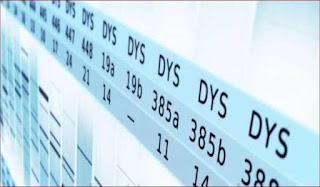CYTOGENETICS
Cytogenetics deals with chromosomes. Chromosomes are thread-like structures that lie coiled up in the nucleus of a non-dividing cell. At the time of cell division (metaphase stage), the nuclear material can be seen as individual chromosomes. The process of cell division, if arrested at this stage, provides an excellent opportunity to study the chromosomes. A normal human cell contains 46 chromosomes, including 22 pairs of autosomes and one pair of sex chromosomes (XX in females and XY in males). Each chromosome consists of a pair of threadlike structures united together at a constriction called a centromere.
Depending on the size of the chromosome and the position of the centromere, the chromosomes can be divided into seven groups (A-G). Karyotype refers to the number, size, and shape of the total chromosomal content of an individual. A normal male karyotype is written as 46, XY and that of a female as 46, XX. Karyogram is the term that is used for the photograph of an individual‘s chromosomes, arranged in a standard manner.
Method of Chromosomal Analysis
 The first step in the study of chromosomes involves a culture of the cells. Most commonly, the lymphocytes of peripheral blood are used. However, the cells in solid tissues can also be studied. The lymphocytes, in the presence of Phytohaemagglutinin (PHA), are cultured in a suitable medium like RPMI 1640. After 72 hours, the cell division is arrested at metaphase with Colchicine. These cells are first suspended in a hypotonic KCl solution that causes them to swell and then they are fixed in acetic acid. A few drops of the fixed cell suspension are dropped onto a glass slide that spreads the chromosomes. The chromosomes are then visualized after Giemsa-staining.
The first step in the study of chromosomes involves a culture of the cells. Most commonly, the lymphocytes of peripheral blood are used. However, the cells in solid tissues can also be studied. The lymphocytes, in the presence of Phytohaemagglutinin (PHA), are cultured in a suitable medium like RPMI 1640. After 72 hours, the cell division is arrested at metaphase with Colchicine. These cells are first suspended in a hypotonic KCl solution that causes them to swell and then they are fixed in acetic acid. A few drops of the fixed cell suspension are dropped onto a glass slide that spreads the chromosomes. The chromosomes are then visualized after Giemsa-staining.
In order to identify individual chromosomes, a special procedure of banding is used in which the unstained chromosome slides are treated with trypsin. Subsequent Giemsa-staining imparts each chromosome with a unique banded appearance that can be seen under a Light Microscope. This type of banding is called GBanding. Many different types of banding techniques like C-banding, Q-banding, and R-banding, etc. are also used for the identification of chromosomes in special circumstances. Recently, it has also become possible to visualize individual chromosomes by using the technique of Fluorescent In Situ Hybridisation (FISH).
Common Indications for Cytogenetics Abnormalities in the number of chromosomes (aneuploidy) involve either the loss or gain of one or more chromosomes. The structural abnormalities of chromosomes involve the translocation of material from one chromosome to another and the deletion or inversion of material from individual chromosomes. The list of chromosomal disorders is very long; their description is beyond the scope of this discussion.
The common indications where cytogenetics may be required are either constitutional disorders or malignancies and other acquired disorders. In both of the categories, the abnormality can be either in the number of chromosomes or in the structure of chromosomes.
